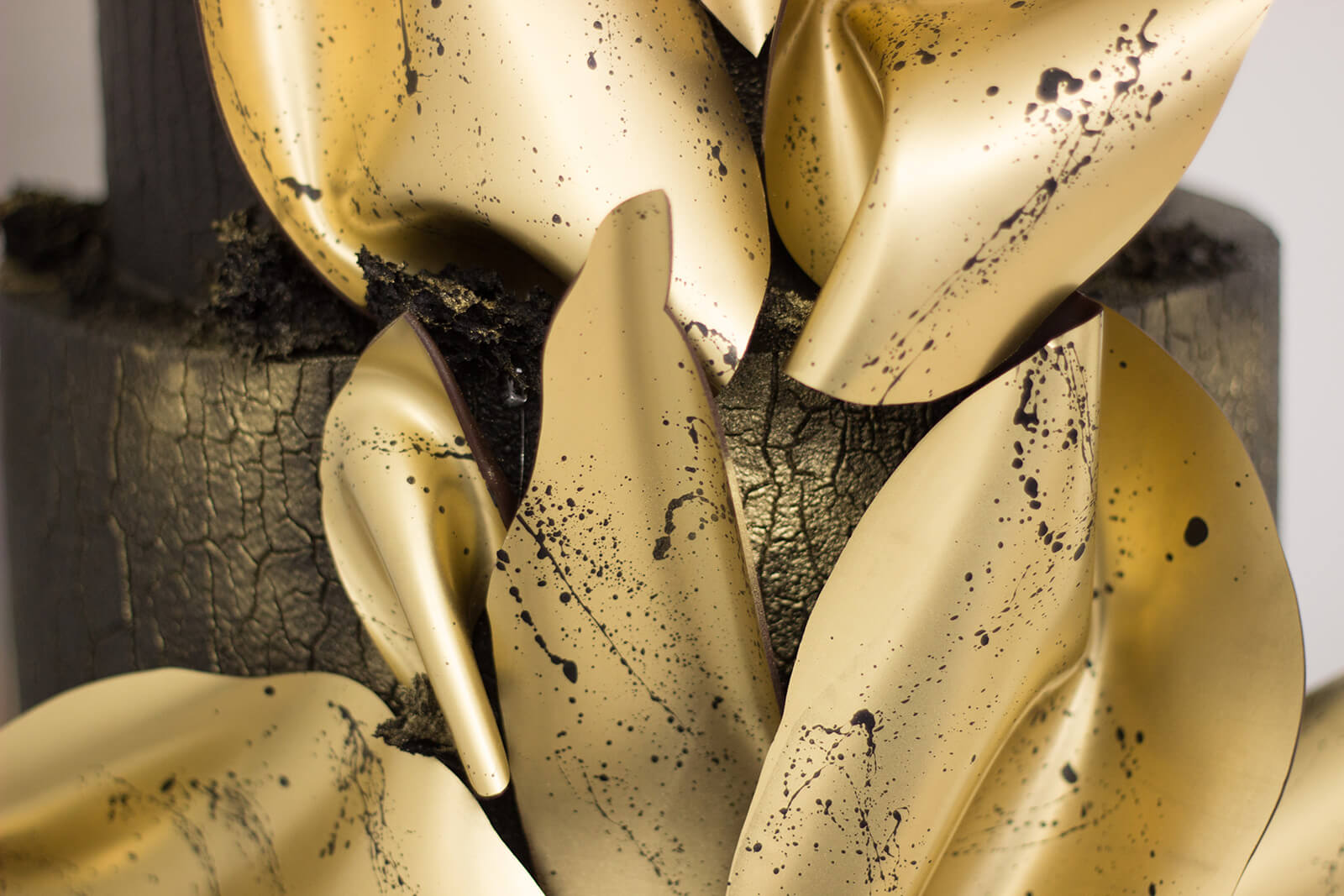We welcome you at our Twist course devoted to decoration with chocolate, design and assembly of cakes! We are very glad that you have joined us. You will soon know all the secrets we use in our work 🙂
In this lesson we will tell you all about the basic equipment and tools necessary for the course. Please note that if you have never made cakes or other confectioneries your kitchen will miss lots of tools. In this lesson we will describe everything you will need to buy obligatory and everything you can replace with the tools you already have.
As for the work with chocolate: we have designed this course in a non-professional kitchen so we will tell you all about ins and outs of working with chocolate in inappropriate conditions. We will also tell you and show you how to assemble tiered cakes, both tall and low. In a separate material we have left links to all the confectionery shops we know in the world, in Russia and Belarus where you can find necessary tools, equipment and products.
We will describe all the tools and equipment we will use in the course but you can always buy cake pans and moulds different from ours, replace some tools with those to your taste and replace colourings at your own discretion.
Let’s begin!
In every lesson you will have a separate list of tools and equipment you will need. Here you can find a list of everything described in general.
Cake pans
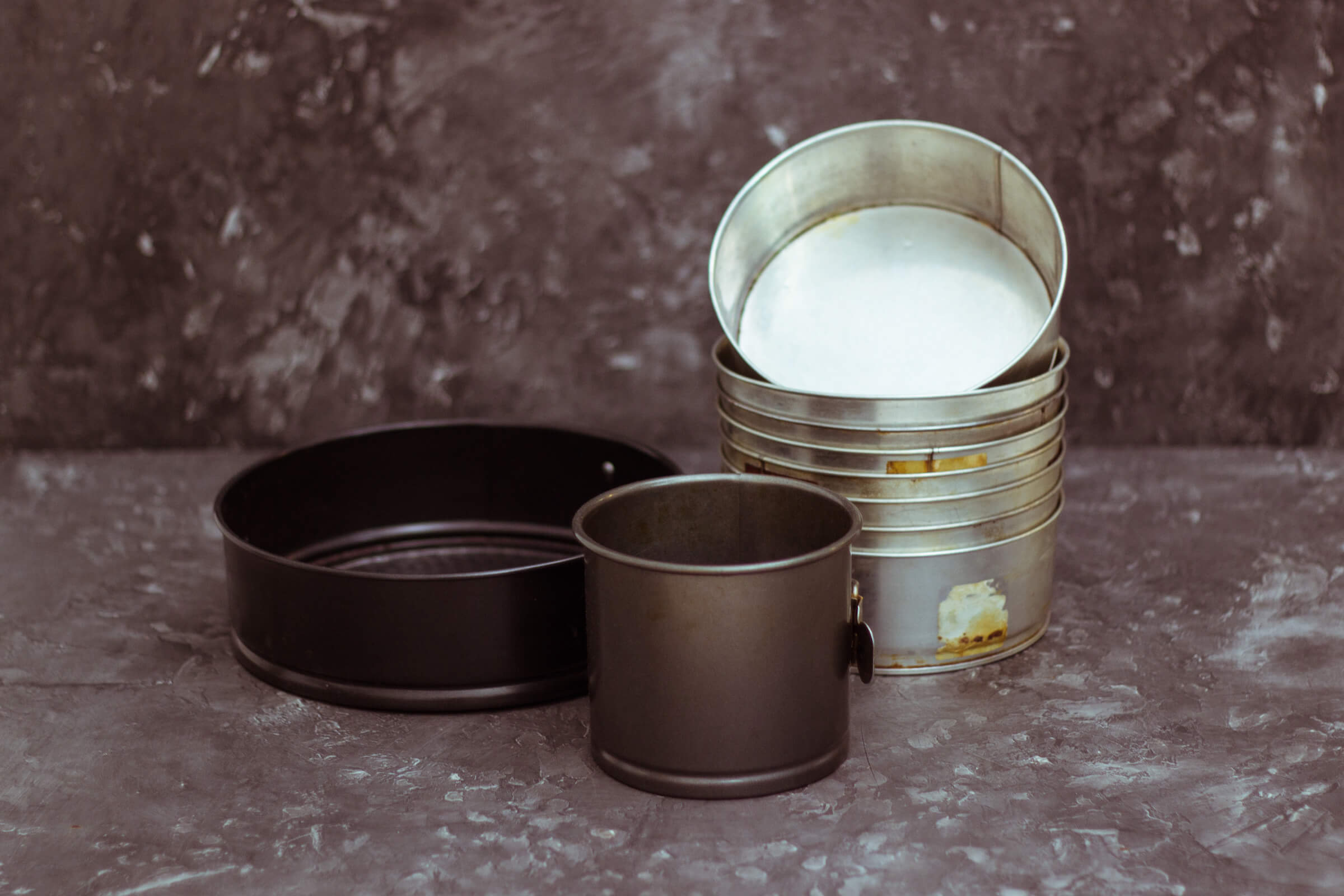
We use simple aluminium cake pans (15.5 cm), a large non-stick pan (22 cm) and a small cake pan (12 cm). Ingredients are calculated and specified exactly for these sizes of the pans. You will need 3 medium-sized pans, 1 large pan and 1 small pan for convenient work.
Can I buy pans of different size?
Yes, you can. In this case you will have to recalculate the amount of ingredients specified in recipes.
Stand mixer (optional)
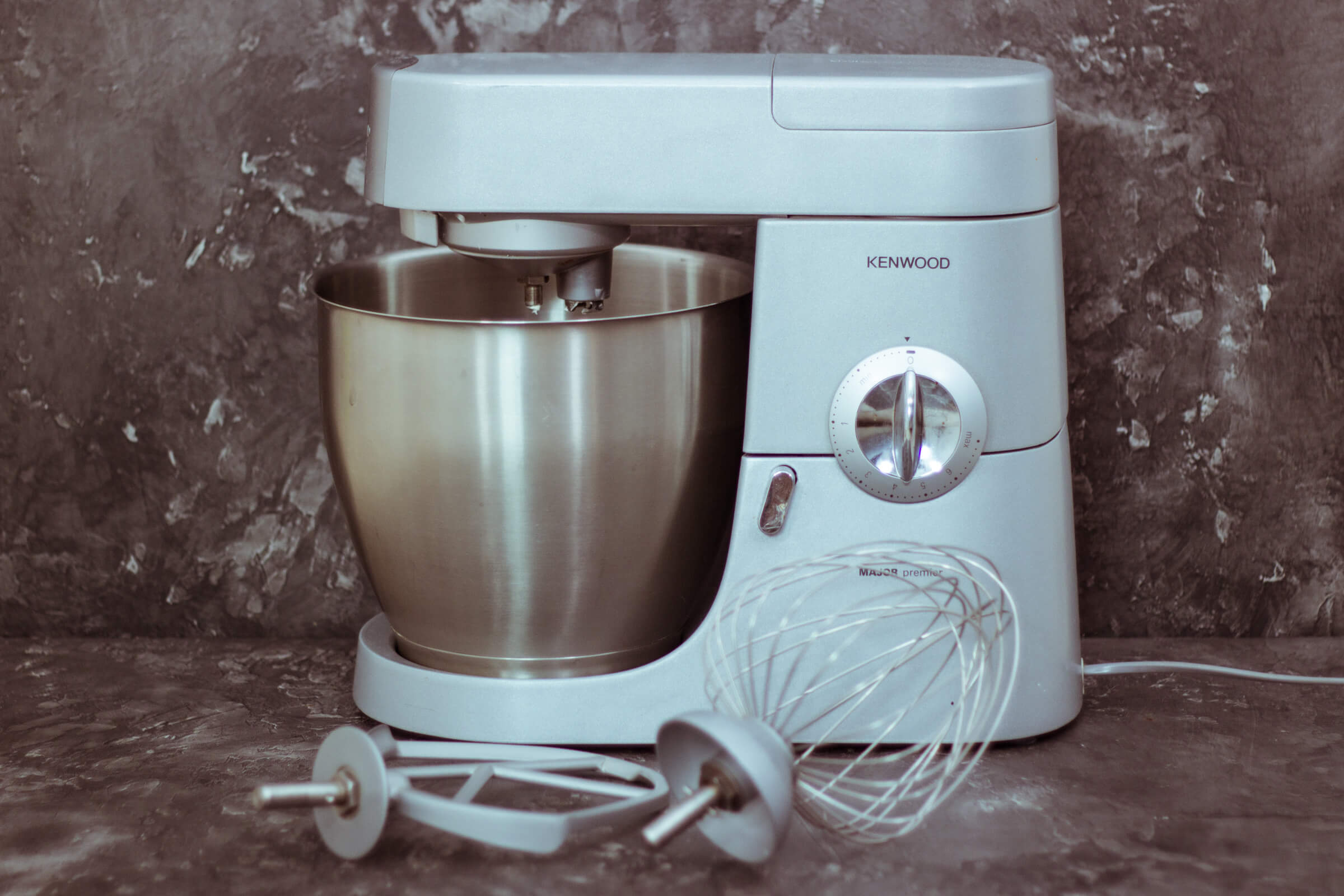
You will need a whisk and a flat beater. It is sometimes called a planetary mixer. If you don’t have such a mixer don’t worry. You can use a simple hand mixer with standard beaters.
Silicone spatulas
Silicone spatulas can come in handy to scrape your frosting from the sides of the bowl and to mix the frosting. We also stir chocolate with a spatula while tempering.
Scrapers
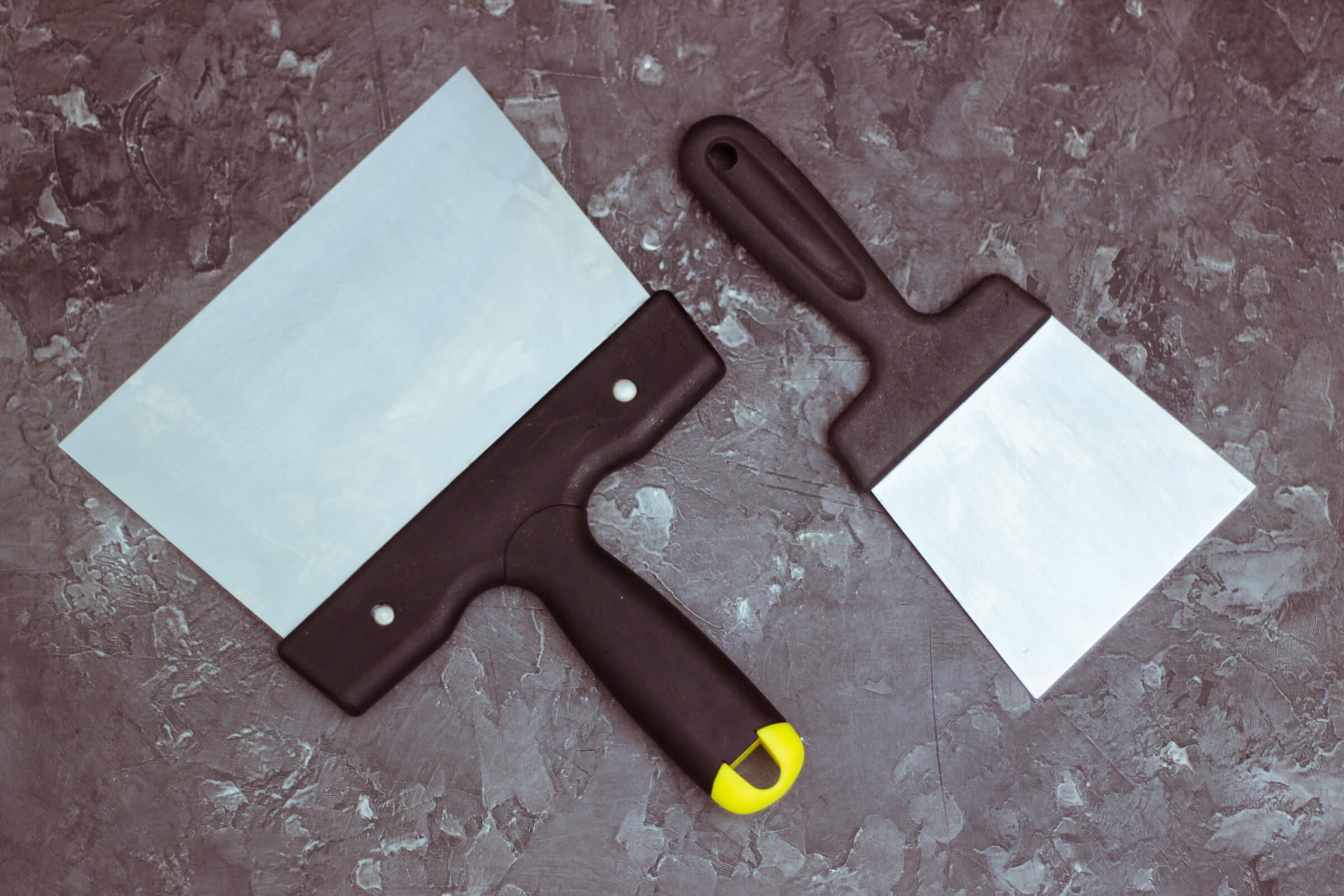
We use scrapers for tempering chocolate and smoothing cakes. You can use scrapers for plastering. Don’t bother buying scrapers in professional confectionery shops (their price will be 10 times higher). Don’t use plastic scrapers too. Apart from the fact they are inconvenient to use they wear out quickly and easily get bent. A scraper size is absolutely up to you. If you have a small marble slab it would be reasonable to buy small scrapers. If you have a big marble slab it would be reasonable to buy big scrapers. Blade width of the biggest scraper we use in the course is 18 cm, the smallest one is 10 cm.
Big scraper for smoothing
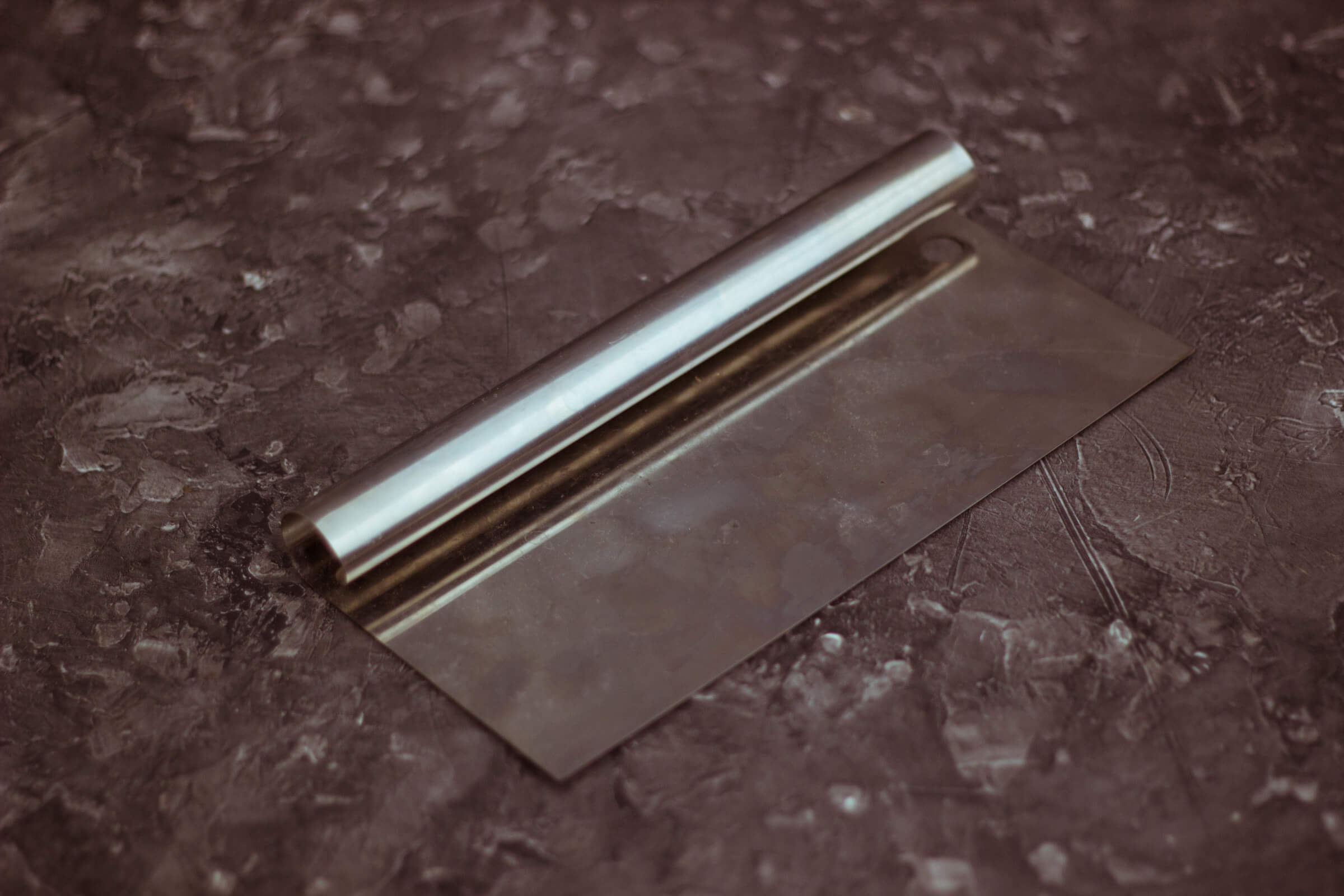
We don’t use it in the course but if you are new to smoothing the frosting on a cake it will be more convenient to start learning using this one. Blade width is 25 cm. You can buy it in confectionery shops.
Rotating cake stand or turntable
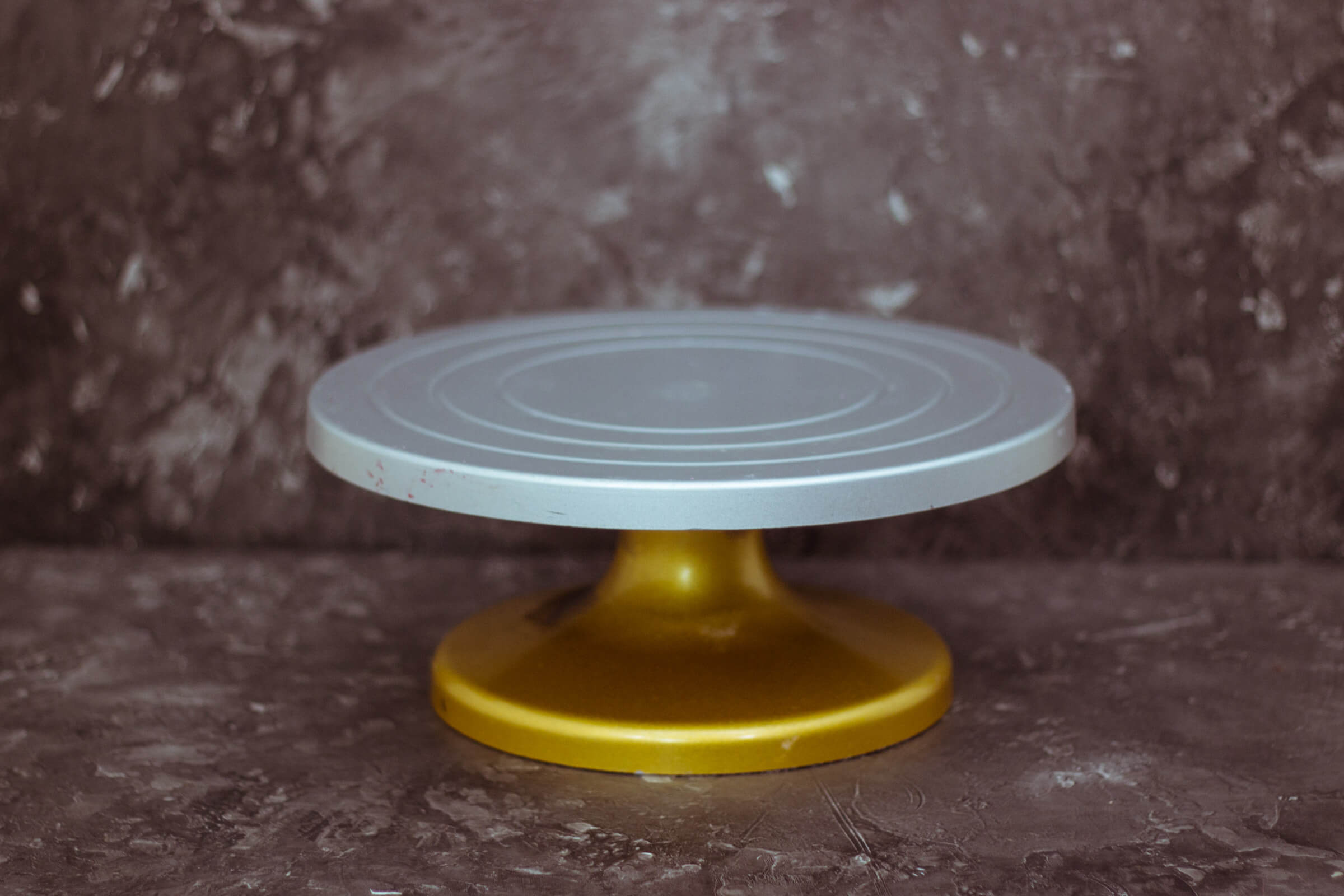
Anything will do. A heavyweight and steady turntable will be the best option. It will help you smooth big and heavy tiers. A turntable won’t bend. It will be easy to transport a cake to the fridge and back again.
Cake leveller
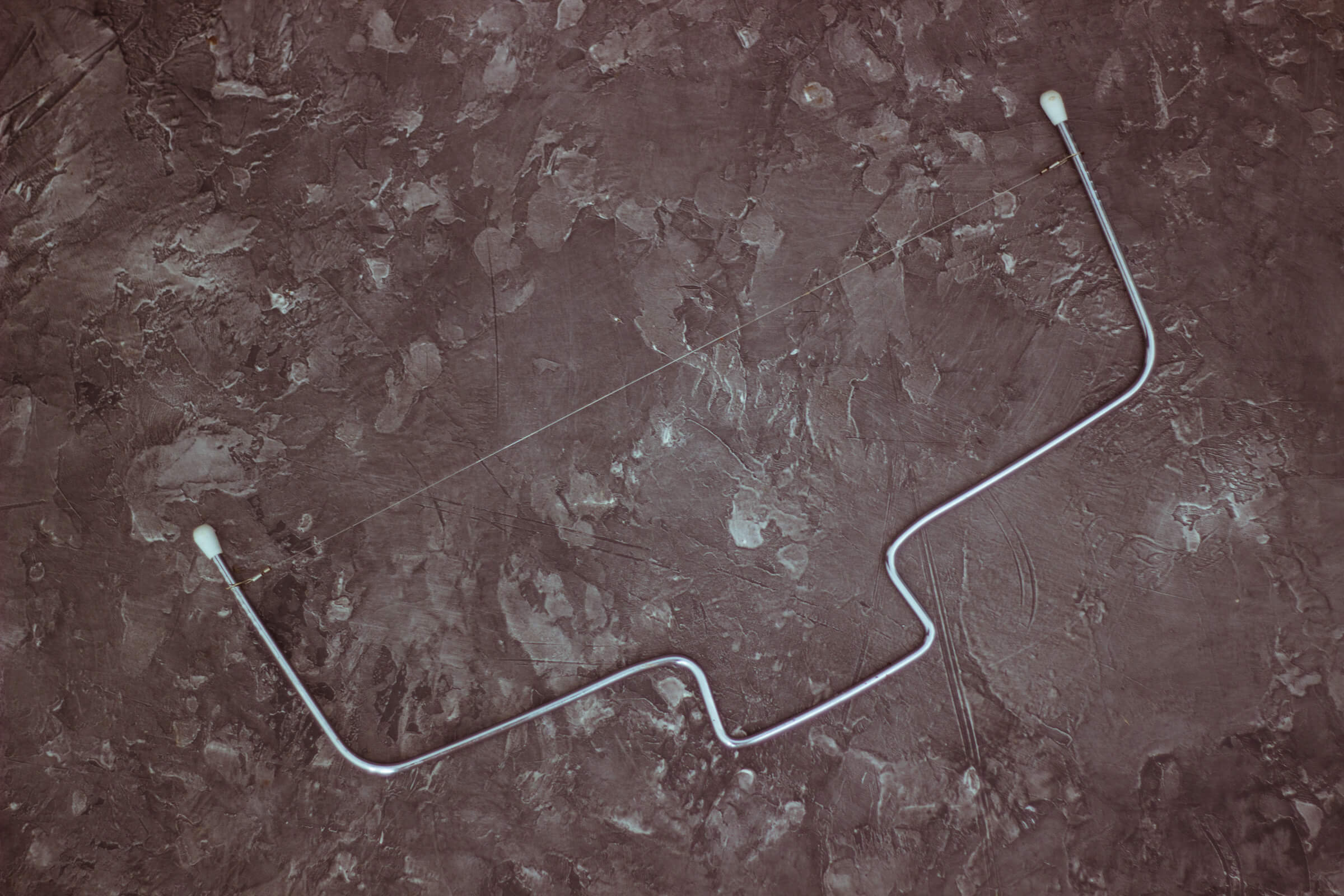
You can cut sponge cakes in a variety of ways. But again, if you don’t have experience in it it’s much easier to use a cake leveller. You can set your wire as high as you want in order to get sponge cakes of the same height. You can buy a cake leveller in confectionery shops.
Digital scales
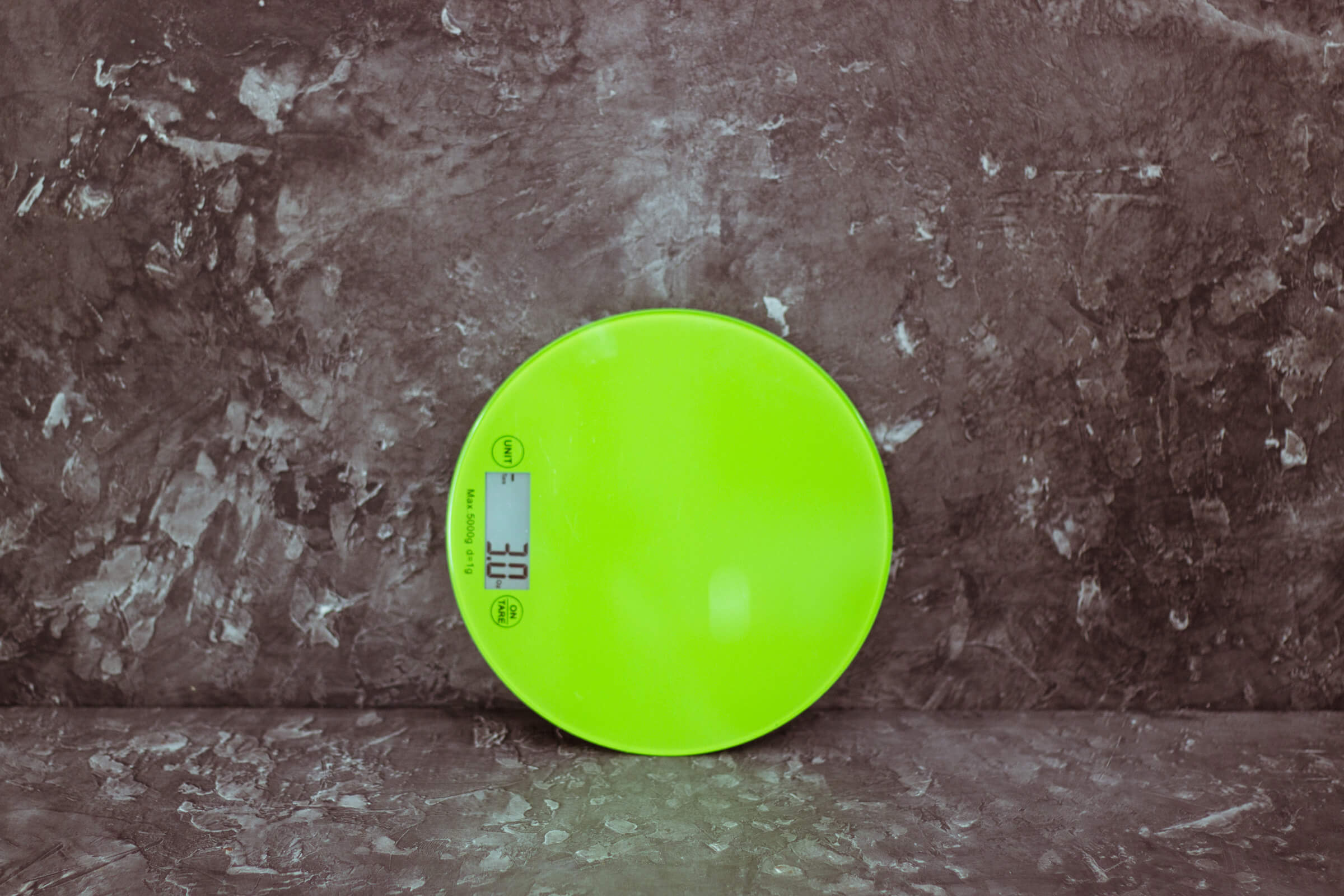
The manufacturer doesn’t matter. The most important thing is that they should be convenient for you to weigh products. Ideally, you need to choose scales with flat surface so that it will be convenient to weigh both products and containers with products inside. Scales should have a tare feature (nowadays all scales have it).
Pyrometer
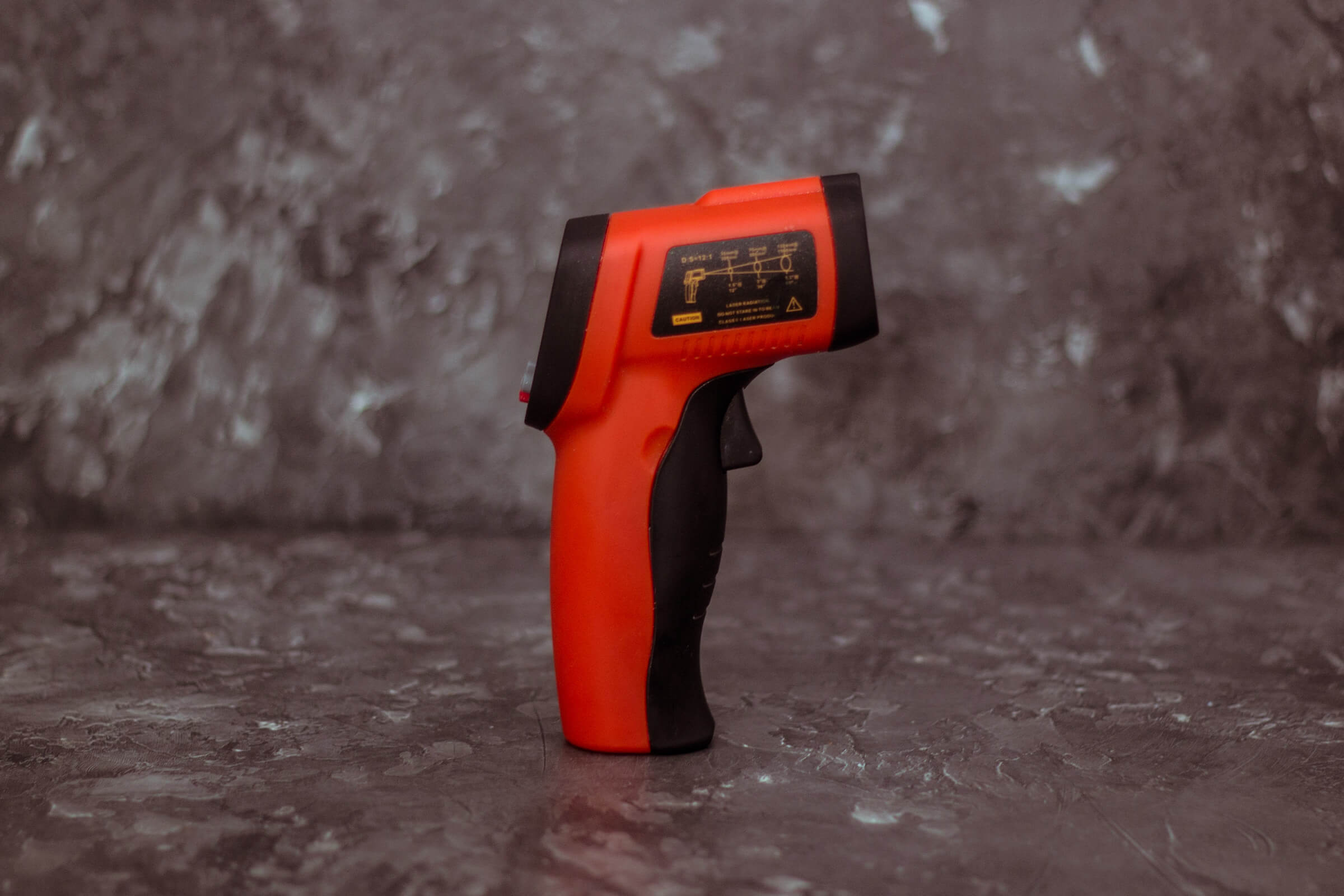
We will use a non-contact infrared thermometer. A model and a temperature range do not matter because we will work at an average temperature range. You can buy the cheapest non-contact thermometer. The main thing is that it has to measure temperature 🙂
Can I use any other thermometers, probe ones for example?
No. It isn’t convenient to measure temperature of chocolate this way. Using such thermometers, you must not touch the surface of a slab (with a tip of the probe) on which we will temper chocolate otherwise you will measure the temperature of chocolate wrong.
Wire rack

It’s necessary for cooling sponge cakes.
Airbrush (optional)
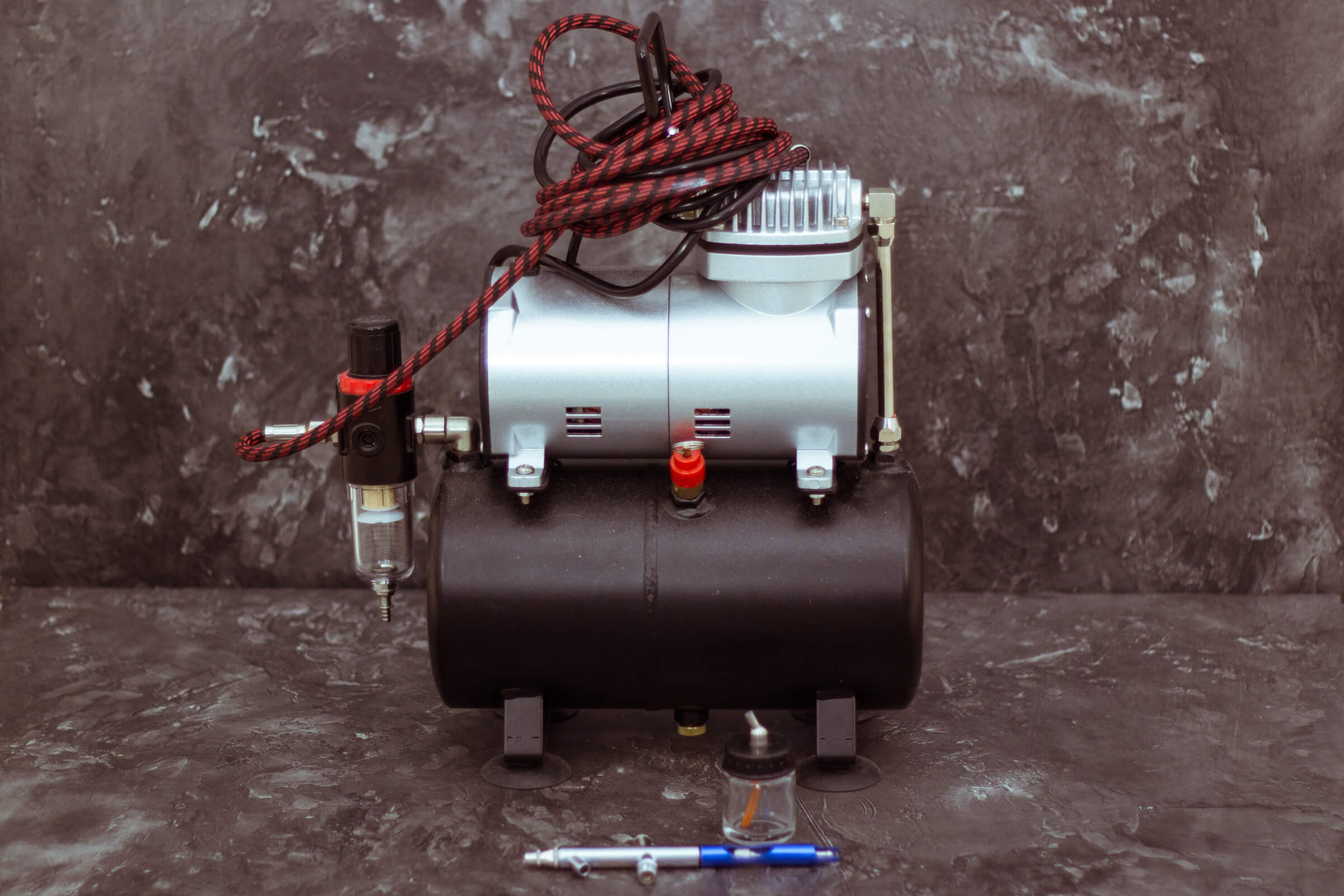
I advise you to buy an airbrush with a nozzle diameter of not less than 0.3 mm and no more than 0.5 mm. A happy medium is 0.4 mm. The manufacturer and other characteristics don’t matter. The manufacturer and other characteristics don’t matter. There are a lot of affordable models of Chinese airbrushes nowadays (the most well-known Chinese company is Jas, see models 1113, 1131, etc.). You can buy a Chinese-made airbrush with a compressor for up to 70$. It will be enough to start with but if you plan to make cakes to order this airbrush won’t be able to withstand the load.
Japanese airbrushes (Iwata, RichPen) are considered to be of higher quality but their price is higher too. In this course we use a Harbor Freight Central Pneumatic 95810 airbrush but we haven’t chosen it because of a certain reason. We’ve got it by chance.
We wash an airbrush with hot water: wash properly, spray hot water through an airbrush by opening and closing the nozzle with a finger. You can also wash it with alcohol if you want. After cleaning you can dismantle it and wash all the accessible pieces (a needle, for example).
Can I attend the course without an airbrush?
Yes, you can. But in this case you won’t be able to create a cosmic design on our cosmic cake and repeat some techniques to create chocolate decoration.
Spray gun (optional)
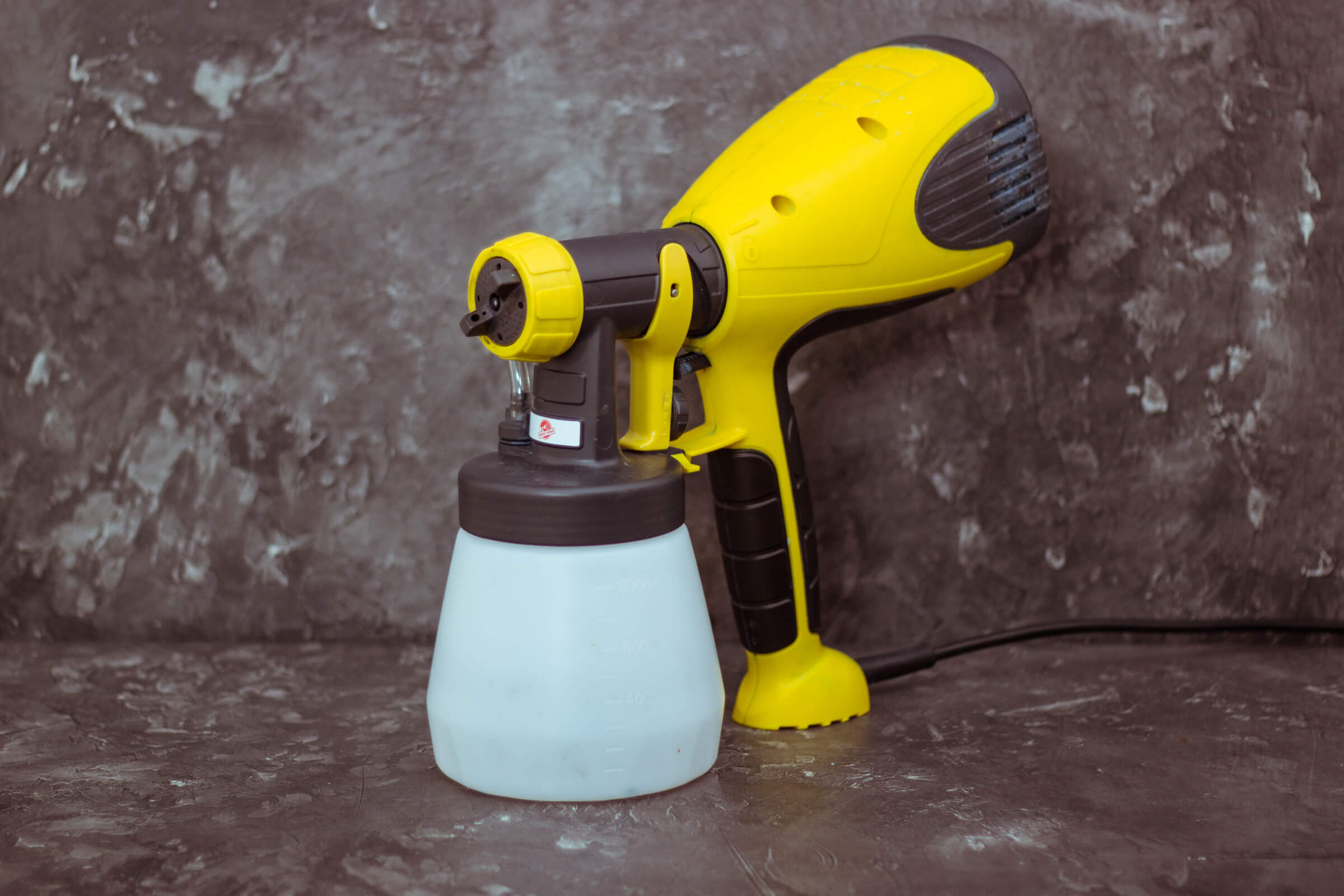
We create velvet texture with a spray gun Wagner W550. A nozzle diameter of our spray gun is 2.5 mm. I.e. it is 4-5 times as much as an airbrush nozzle (0.8 mm). When creating a velvet texture, a nozzle diameter plays a key role in the size of a velvet drop. If you work with cakes and create velvet textures on a regular basis you will have to purchase and use a lot of various tools. If it happens quite rare and you work with small amounts you can purchase an airbrush with interchangeable nozzles. You will work with cocoa butter using a nozzle of 0.4 mm and create a velvet texture using a big nozzle at lower temperature of the mixture. In this course we don’t create velvet texture with an airbrush.
Small cheap compressors (usually used by the students at the very beginning) are not suitable for creating a velvet texture. We recommend you to ask salespeople for advice and explain to them that you will spray chocolate and cocoa butter mass.
Can I attend the course without a spray gun?
Yes, you can. But in this case you won’t be able to create chocolate velvet texture. We create the texture on a cosmic cake and our final five-tier cake.
Marble slab
A marble one or a granite one – it doesn’t matter. It must be perfectly smooth and without cracks. Minimal size – 60×30 cm. The bigger it is the more convenient it will be for you to temper a large amount of chocolate (but it will be harder to move the slab because of its weight). It’s better to buy a light-coloured slab because it’s easier to see where chocolate is. A slab colour doesn’t influence temperature. A small size of a slab can be found in ceramic tile shops where you can also buy both marble and granite slabs. Or you can order it from someone who makes table tops of these materials.
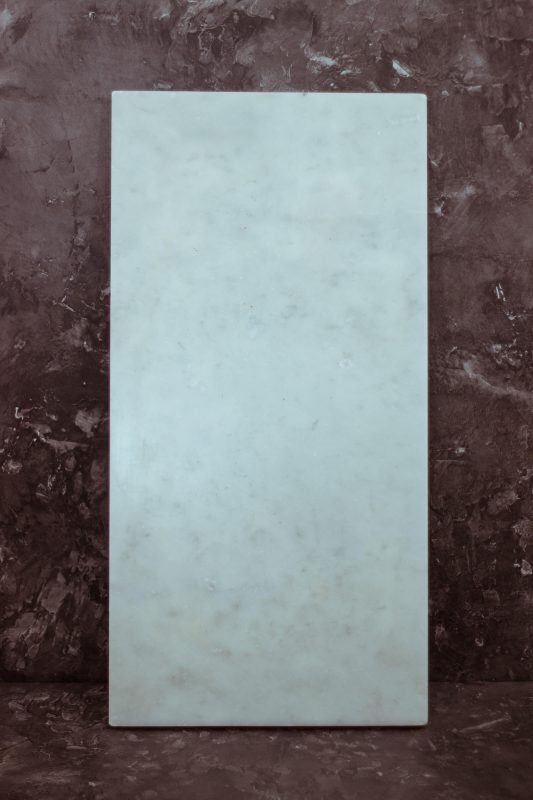
Does a material influence tempering?
If we are talking about granite or marble slabs, of course, then no, it doesn’t. Every material has its thermal conductivity coefficient which shows the property of a certain material to conduct heat. The higher this coefficient is the quicker the material will heat and cool under the influence of external factors. Thermal conductivity coefficient of granite is 3.49, and of marble – 2.91. That is why a preheated marble slab, or a precooled marble slab, will hold its temperature a little bit longer under the influence of the same external factors in comparison to granite slabs. But it’s only for your information, not for a choice of a slab.
Granite is stronger, harder and more resistant not only to mechanical damage, but to some other impacts, too, but it doesn’t affect its cooling capacity. In real living environment when you stir chocolate on a slab its hardness doesn’t matter. The best option is to choose a slab which will be convenient for you. Its size and weight should be convenient and suitable for you to work with it taking into account your working space.
Will an artificial stone slab be okay?
No, it won’t.
Microwave oven
It’s necessary for melting chocolate, cocoa butter and preparation of sponge cake moss. If you don’t have any just borrow it from your friends for the whole course 🙂 Any microwave oven will do!
Chocolate moulds
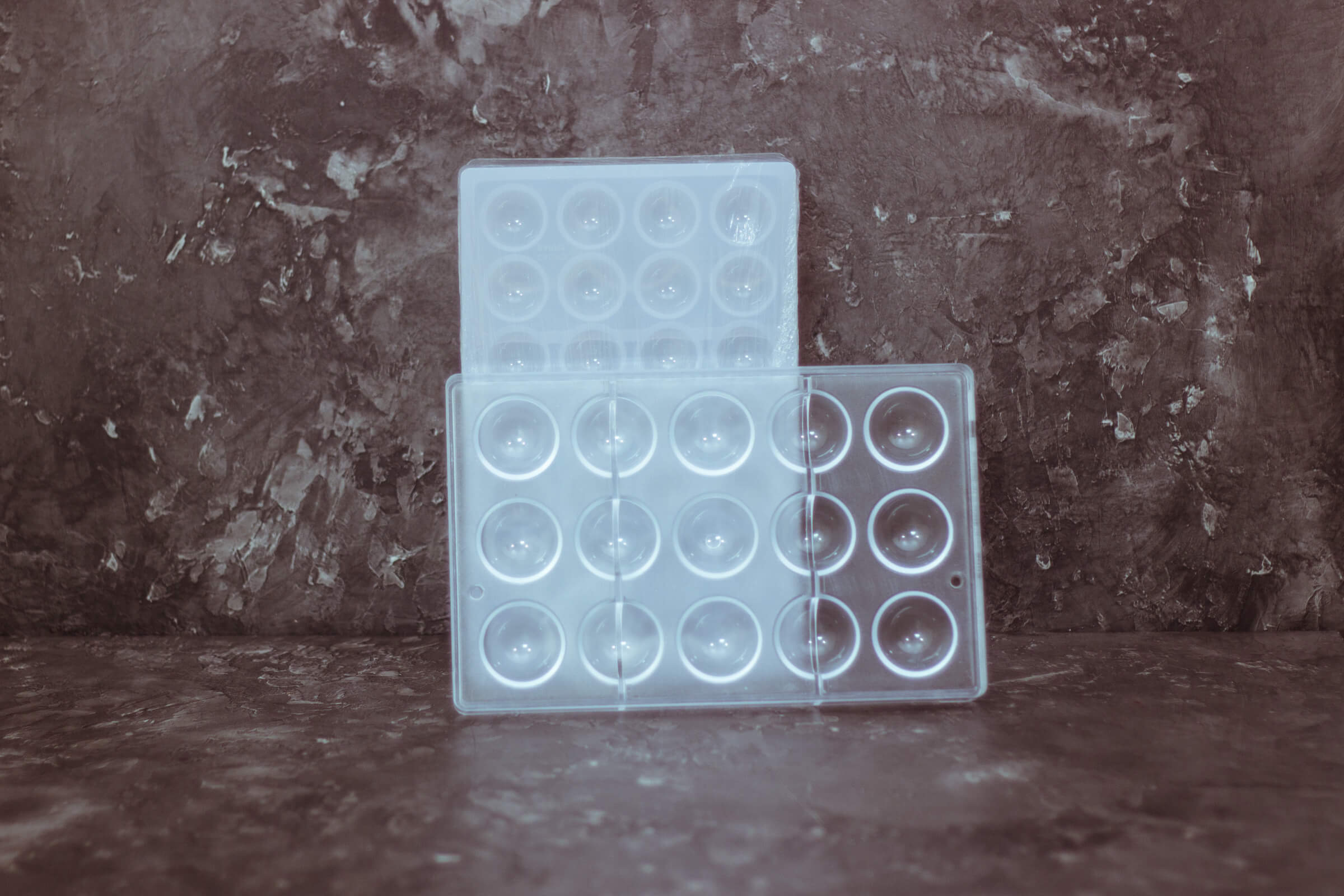
In this course we use big polycarbonate half sphere moulds (5 cm) and small ones (3 cm) which can be bought in confectionery shops. They are firm and keep their form well. In full version of the material you will know how to care about it.
Can I use another sizes?
Yes, you can.
Whisk
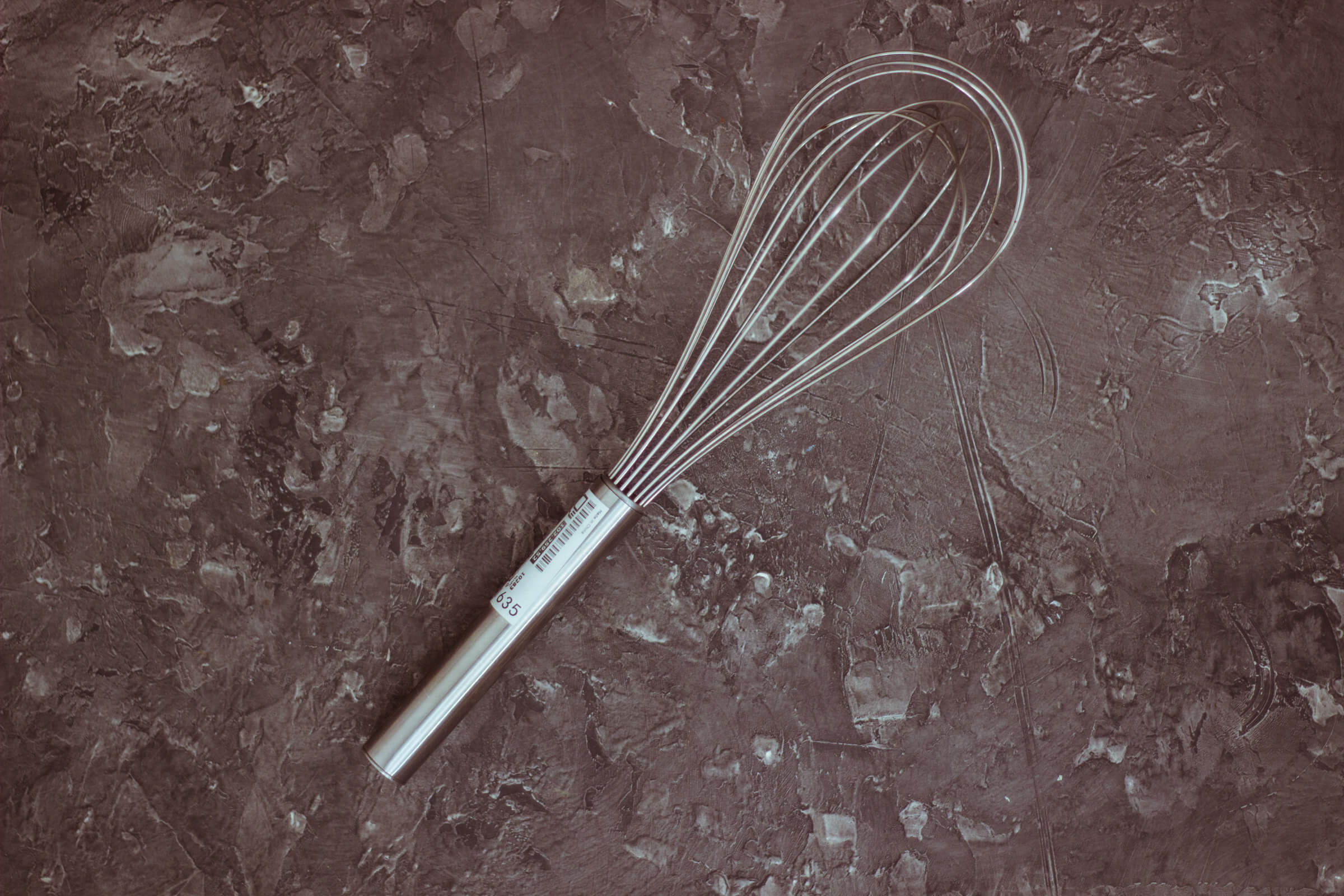
We use it for mixing various ingredients. Any big whisk will be perfect.
Box cutter
We use it for decoration with chocolate. You can also use a simple small sharp knife.
Decorating bags
Disposable or reusable decorating bags – it doesn’t matter. We will need big bags (40 cm at a shorter side) and medium-sized bags (20 cm at a shorter side).
Water-soluble and oil-soluble food colourings
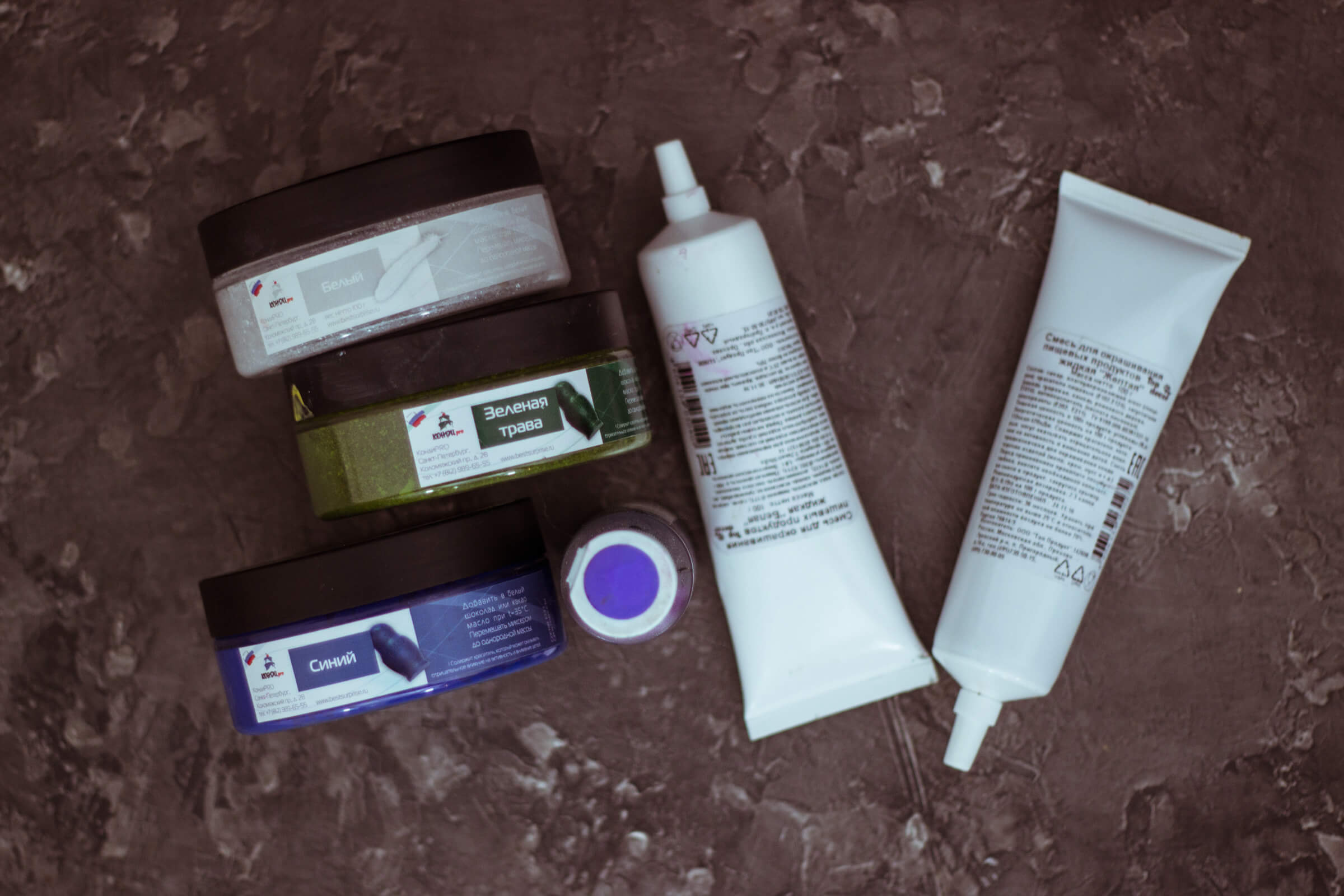
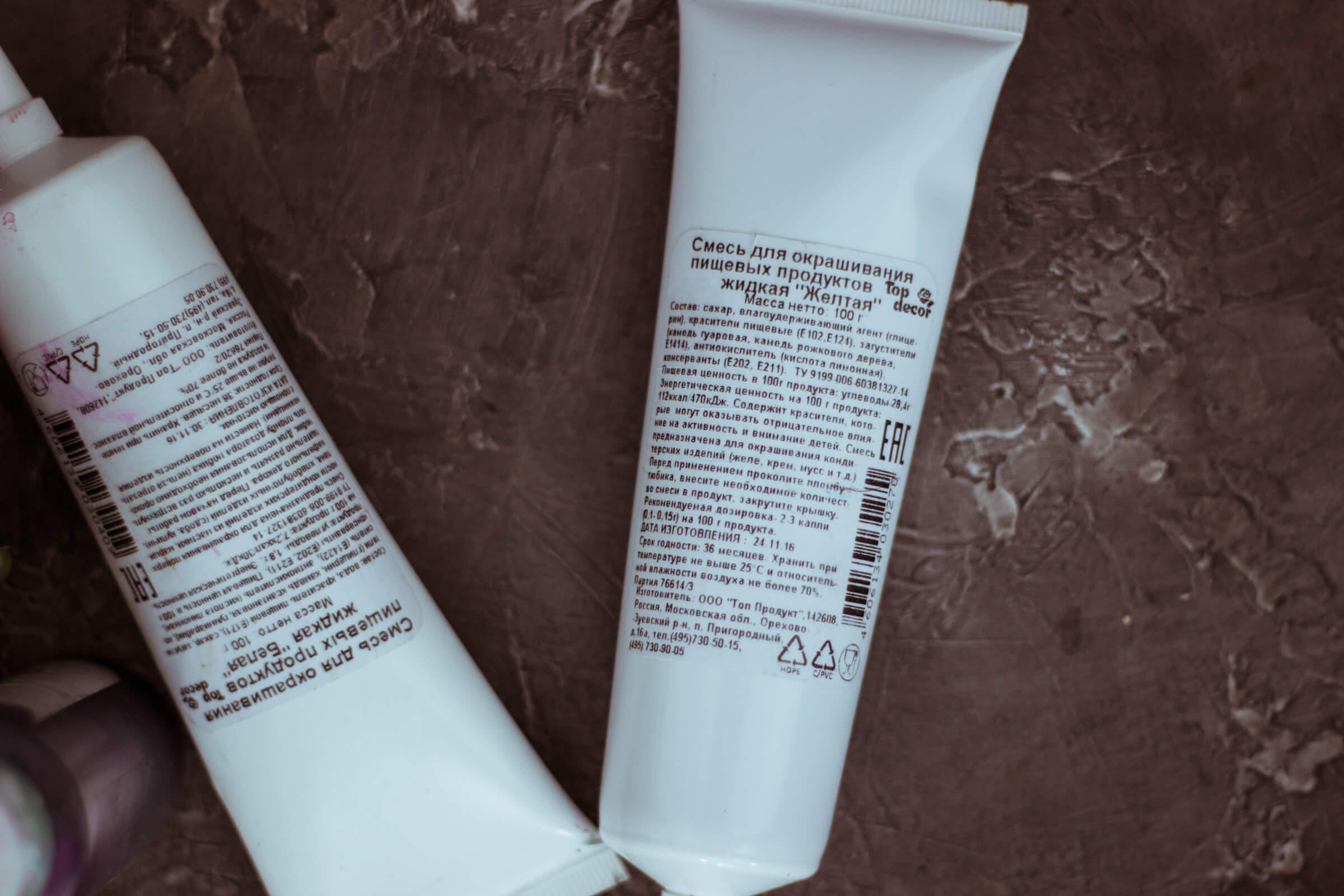
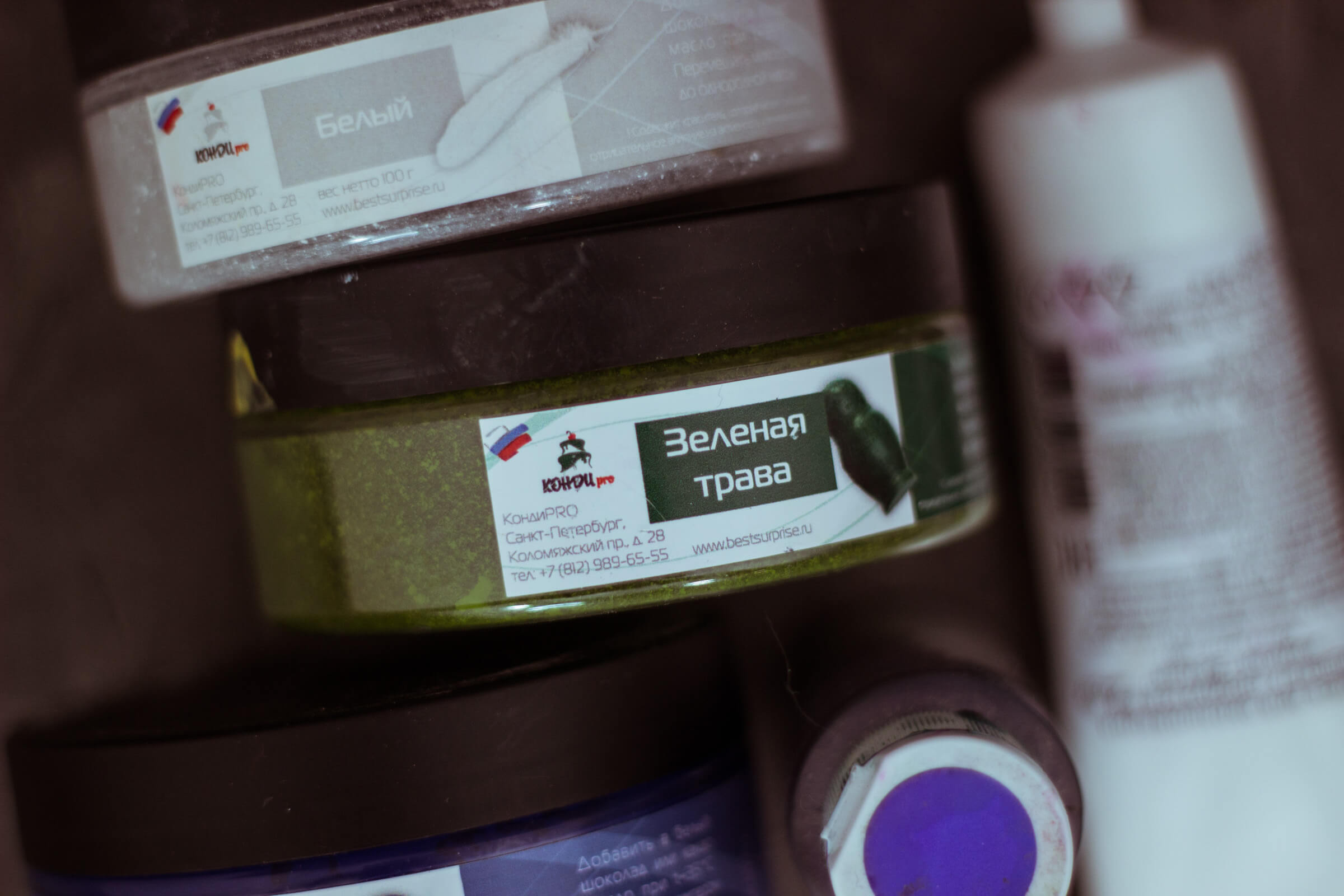
We use only dry powder colourings for chocolate. They have to be oil-soluble. We recommend you to buy all the primary colours which will be used during the course: yellow, green, red, white (titanium dioxide), blue and black. We will also make a cosmic cake so you will need a lot of colours.
We use liquid water-soluble colourings for frostings. It’s better to buy them in big tubes. Colours: white, black, brown, red, purple, blue, green.
Room temperature requirements
It shouldn’t exceed 20°C (68 °F). But now sit down because I’ll reveal the top secret. You don’t have to buy an air conditioner to work with chocolate at home! I have worked both at more than 21°C (69.8 °F) and at unbearable heat. In such situations you have to resort to some tricks. We will reduce the temperature, so to say, locally. I will share some pieces of advice with you in the next lessons.
Chocolate and cocoa butter
You can basically use any. It doesn’t matter.
I recommend buying both chocolate and cocoa butter in professional confectionery shops or turn to chocolate raw material suppliers and manufacturers who offer professional ingredients. Belgian, French, Italian or German chocolate – it doesn’t matter. The whiteness of cocoa butter doesn’t also affect its quality.
You can attend the course using chocolate and cocoa butter bought in a simple shop but we do not recommend to do it.
Store ingredients at 12–20°C (53.6–68°F) (but not in the fridge!) in a dark place but keep away from sunlight. In case storage conditions are inappropriate and your working environment is hot take into account that it’s better to make decorations right before use.
It doesn’t matter how much cocoa butter will be contained in chocolate you will buy for the course. Its taste also doesn’t matter that much. Remember that you are still learning so all of that doesn’t matter, at least now. Later when you will know all the ins and outs you will decide everything for yourself.
As far as the amount of cocoa better and chocolate is concerned it is specified in the summary table (will be available soon 🙂 But you have to take into account the fact that you can spoil and throw away a huge amount of it just because you will be learning how to do it right. I recommend you to buy ingredients as you go through the course (I mean the purchase of 2–3 kg of chocolate or 0.5 kg of cocoa butter is not necessary before the course begins). You can experiment with different chocolate and cocoa butter brands.
Baking oven
Any oven you have at home is great. We will bake at conventional mode (the top and bottom heating elements), without convection.
< ... >
That is basically everything we need for the course. Take the equipment and tools and we will begin with the most interesting part ?
The full version of article is available only for students
